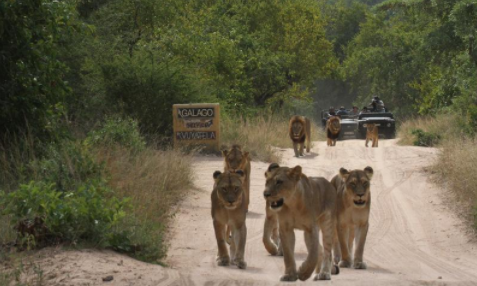Nat Geo to air ‘Earth Live’ Event in July
 |
| Photo: Brent Leo-Smith Courtesy of Nat Geo |
National Geographic is getting more bold and creative with giving their viewers an exciting live experience. The network announced today that television personality Phil Keoghan will team up with actress Jane Lynch as hosts of “Earth Live.” Starting Sunday, July 9, at 8:00 p.m. ET, National Geographic will air live wildlife programming across National Geographic, Nat Geo WILD and Nat Geo MUNDO networks.
The two-hour live broadcast is the first of this kind and will feature animals in real time and in their natural habitat, bringing many viewers and close to a safari as they may ever see in their lifetime.
Following “Earth Live,” aggressive programming will continue with a sneak peak of “Safari Live: Migration.” For three years, Nat Geo WILD’S “Safari Live” has showcased live safaris daily from the famous Sabi Sands in South Africa’s Kruger National Park. “Safari Live” takes the production to Kenya’s Maasai Mara for the first time.
Keoghan and Lynch will host the event from New York around the world which will be simulcast globally on National Geographic, Nat Geo WILD and Nat Geo MUNDO in 171 countries and 45 languages.
Animal expert, zoologist and naturalist Chris Packham will join Lynch and in the studio. For the first time, viewers will watch live wildlife lit only by the moon, in full color, via new low-light camera technology with a Canon ME20.
Some of the locations “Earth Live” will broadcast from include:
• Bracken Cave, Texas, where cameras will capture the 20 million Mexican free-tailed bats as they leave their subterranean cave;
• Fiji, where strong tides powered by the moon pull nutrients up from the depths of the sea to fertilize the reef and create a perfect home for bull sharks;
• Maasai Mara, Kenya, where cameras will capture prides of lions waiting for migrating herds to pass;
• Jodhpur, India, where troops of Hanuman langurs wake up from their overnight roosts in search of food; and
• Alaska, where cameramen and scientists will travel to the southeast coast in search of humpback whales to capture whale DNA with a specifically designed drone called the “snot-bot.”
Catch the “Earth Live” broadcast on Sunday, July 9.











